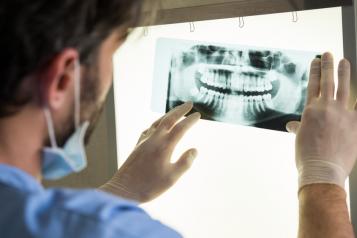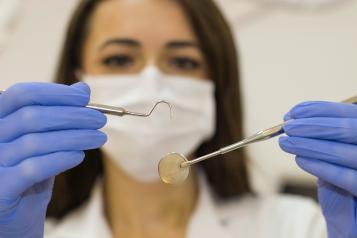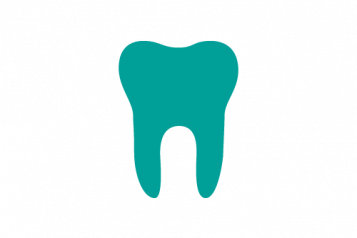Brushing our teeth – what’s it all about?

Plaque is a thin, sticky film of bacteria that constantly forms on your teeth.
When we eat foods containing sugars and starches, the bacteria in plaque produce acids, which attack tooth enamel. The stickiness of the plaque keeps these acids in contact with your teeth. After constant acid attack, the tooth enamel can break down forming a hole or cavity and you may need a filling.
If plaque is not removed by brushing, it can harden into something called ‘calculus' - another name for it is 'tartar' and gives your teeth a yellow-brown colour
Tartar forms near the gumline, the plaque underneath releases harmful chemicals causing the gums to become irritated and inflamed.
This can lead to gums starting to pull away from our teeth and the gaps become infected. If gum disease is not treated promptly, the bone supporting the teeth may start to weaken and healthy teeth can become loose and fall out.
We all need to take more time brushing our teeth and brush twice a day.
Most people spend about 1 minute brushing teeth, but dentists recommend we should take more time than this – about 2 minutes. We all need to remember to brush the inside surfaces, outside surfaces and the chewing surfaces of our teeth.
Twice a day is best – people often do this after breakfast and before going to bed.
Brushing is good but we all need to floss too.
Brushing doesn’t get rid of all food trapped between teeth. If this isn’t removed, then this can promote plaque and tarter build up leading to gum disease and tooth decay.
We all need to floss twice a day just before we brush our teeth.
There are two main ways to floss between our teeth: Dental floss (soft thread, string of silk or similar material) and Dental Sticks (Interdental Brushes).
Should I use an electric or manual toothbrush?
It does not really matter whether you use an electric or manual toothbrush.
They are both equally good, if you brush all the surfaces of all your teeth, and use a toothpaste containing fluoride.
Many people find it easier though to clean their teeth thoroughly with an electric toothbrush.
Looking after your toothbrush
When we brush our teeth, we are essentially removing bacteria that can cause plaque and tartar. So, toothbrushes need to be clean too!
It’s important to rinse your brush thoroughly after each use and shake to remove excess liquid. Don’t store it in a closed container as it’s good to let the toothbrush dry to reduce the number of bacteria on it.
It is probably a good idea to change your toothbrush, or the head of your electric toothbrush every 3 to 4 months. A sign that your toothbrush needs replacing is that bristles may appear frayed and flattened.
Finally - please don’t share your toothbrush!
Why are we recommended to use toothpaste containing fluoride?
Fluoride helps prevent tooth decay by making the tooth more resistant to acid attack from plaque bacteria and sugars in our mouth.
In children under 6 years of age, fluoride becomes incorporated into the development of permanent teeth, making it difficult for acids to demineralize the teeth.
Fluoride also helps speed remineralization as well as disrupts acid production in teeth of both children and adults.
How much fluoride is needed in toothpaste?
Adults should use a toothpaste that contains at least 1,350 parts per million (ppm) fluoride.
Children do not need to use special children's toothpaste.
Children of all ages can use a family toothpaste that has 1,350 to 1,500ppm fluoride.
Don’t rinse your mouth out after cleaning your teeth!
After brushing your teeth, spit out any excess toothpaste.
Do not though rinse your mouth immediately after brushing – this will wash away the concentrated fluoride in the toothpaste remaining on our teeth and reduces the protective effect of fluoride.
Should I use a mouthwash?
Some mouthwashes do contain fluoride, and this can help prevent tooth decay.
Don’t though use mouthwash (even one with fluoride) straight after brushing your teeth as this will wash away the concentrated fluoride in the toothpaste left on your teeth and reduce the protective effect of fluoride.
It’s best to choose a different time to use mouthwash, such as after lunch or a snack. To get the best effect of the mouthwash - don't eat or drink for 30 minutes after using a fluoride mouthwash.
Registering with an NHS dentist
Unlike GPs, dentists do not have catchment areas – so in theory you can register at any dentist that is best for you like.
NHS Dental surgeries will not always have the capacity to take on new patients. In this case you can join their waiting list, look at a different dental surgery or consider a private dentist.
We’ve got more information on how to find an NHS dentist here
Teeth are used in forensic investigations by the police!
- Our teeth have surface rod patterns (ameloglyphics) – these are unique to each person. A forensic dentist can take a print of our enamel rod pattern to identify people. Unlike fingerprints, rod patterns cannot be intentionally burned or cut to change the pattern.
- A forensic dentist can extract DNA from teeth to crossmatch and identify a victim.
- Investigators can examine dental records to match them to a corpse, or to match a bite mark to a perpetrator.


